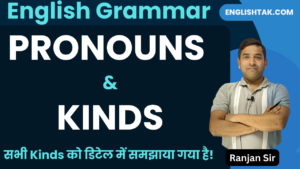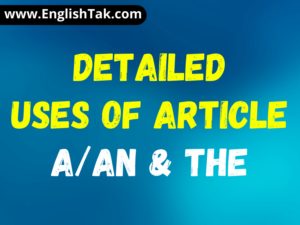![]()
Possessive Case in English Grammar
Table of Contents
Possessive Case in English Grammar – Welcome to our bilingual journey into the world of possessives in English grammar! In this post, we’ll explore how possessives help us show ownership and express relationships—an essential tool for clear communication. Whether you’re writing my book, Sarah’s ideas, or even The Queen’s speech, understanding the structure behind possessives can elevate your language skills.
हम इस ब्लॉग पोस्ट में यह जानेंगे कि किस तरह से possessives का उपयोग करके हम किसी चीज़ का मालिकाना हक़ या उसके साथ जुड़ाव दर्शा सकते हैं। Here, you’ll find explanations in both English and Hindi, with key terms like Possessive Determiners and Possessive Pronouns retained in English to maintain their familiar form. For instance, you’ll see examples such as The teacher’s desk, the dog’s park, and The King’s decision explained in a way that makes sense in both languages.
Possessive Case in English Grammar
Join us as we break down the rules—from singular and plural forms to compound nouns and special cases—providing plenty of examples along the way. Whether you’re a student, a teacher, or just a language enthusiast, this post is designed to help you master the art of possessives with clarity and confidence. Enjoy the exploration, and feel free to dive into the examples to see these concepts in action!
Possessive Case in English Grammar
1. Understanding Possessives / Possessives को समझना
English:
Possessives indicate ownership or a close relationship between entities. They can appear as Possessive Determiners (adjectives) placed before a noun (e.g., my book) or as Possessive Pronouns replacing the noun (e.g., mine).
Hindi:
Possessives का प्रयोग यह दर्शाने के लिए किया जाता है कि किसी चीज़ का मालिकाना हक़ या उससे संबंधितता है। इन्हें दो रूपों में देखा जा सकता है:
- Possessive Determiners (adjectives): जो संज्ञा से पहले आते हैं (जैसे my book = मेरी किताब)।
- Possessive Pronouns: जो संज्ञा के स्थान पर अकेले उपयोग होते हैं (जैसे mine = मेरा)।
Examples:
- My pen = मेरा पेन
- Your house = आपका घर
- His idea = उसकी idea
2. Forming Possessives for Nouns / Nouns के लिए Possessives बनाना
2.1 Singular Nouns / Singular Nouns के लिए
English:
For most singular nouns, you form the possessive by adding an apostrophe and an s.
- Examples:
- The girl’s book means the book belongs to the girl.
- The boy’s bicycle indicates the bicycle belongs to the boy.
- The teacher’s desk signifies that the desk belongs to the teacher.
Hindi:
अधिकांश singular nouns के लिए, possessive बनाने हेतु अंत में apostrophe और s जोड़ा जाता है।
- उदाहरण:
- The girl’s book का अर्थ है कि किताब लड़की की है।
- The boy’s bicycle का मतलब है कि साइकिल लड़के की है।
- The teacher’s desk का मतलब है कि डेस्क शिक्षक का है।
2.2 Singular Nouns Ending in -s / -s से समाप्त होने वाली Singular Nouns
English:
If a singular noun ends in -s, you can add either ‘s or just an apostrophe based on your style choice.
- Examples:
- James’s book or James’ book.
- Ross’s party or Ross’ party (indicating the party hosted by Ross).
- Chris’s idea or Chris’ idea (expressing that the idea belongs to Chris).
Hindi:
यदि कोई singular noun -s पर समाप्त होती है, तो आप style के अनुसार ‘s या केवल apostrophe का उपयोग कर सकते हैं।
- उदाहरण:
- James’s book या James’ book (जेम्स की किताब)।
- Ross’s party या Ross’ party (रॉस की पार्टी)।
- Chris’s idea या Chris’ idea (क्रिस का idea)।
2.3 Plural Nouns / Plural Nouns के लिए
English:
- Regular Plurals Ending in -s: Add only an apostrophe after the final s.
- Examples:
- The teachers’ lounge indicates a lounge for multiple teachers.
- The dogs’ park shows that the park is for several dogs.
- The cats’ toys signifies that the toys belong to many cats.
- Examples:
- Plural Nouns Not Ending in -s: Add ‘s to form the possessive.
- Examples:
- The children’s playground indicates the playground for children.
- The men’s room signifies the restroom for men.
- The women’s committee means the committee of women.
- Examples:
Hindi:
- Regular Plurals (जो -s पर खत्म होते हैं): अंत में केवल apostrophe जोड़ें।
- उदाहरण:
- The teachers’ lounge = शिक्षकों का lounge।
- The dogs’ park = कुत्तों का पार्क।
- The cats’ toys = बिल्लियों के खिलौने।
- उदाहरण:
- Plural Nouns (जो -s पर खत्म नहीं होते): अंत में ‘s जोड़ें।
- उदाहरण:
- The children’s playground = बच्चों का खेल का मैदान।
- The men’s room = पुरुषों का कक्ष।
- The women’s committee = महिलाओं की समिति।
- उदाहरण:
2.4 Compound Nouns and Joint Possession / Compound Nouns और Joint Possession
English:
- Joint Possession: When multiple nouns share ownership, add the possessive only to the last noun.
- Examples:
- Jack and Jill’s adventure means the adventure belongs jointly to both.
- Sara and Tom’s project indicates that the project is a joint effort by Sara and Tom.
- My brother and sister’s house implies that the house is shared by both siblings.
- Examples:
- Separate Possessions: When each noun has its own item, each should take the possessive form.
- Examples:
- Jack’s and Jill’s opinions shows that each of them has individual opinions.
- Sara’s and Tom’s cars means each owns a different car.
- My brother’s and sister’s books indicates that they each have their own collection of books.
- Examples:
Hindi:
- Joint Possession: जब दो या अधिक nouns का मालिकाना हक़ एक ही चीज़ पर हो, तो केवल अंतिम noun में possessive का प्रयोग करें।
- उदाहरण:
- Jack and Jill’s adventure का अर्थ है कि यह साहसिक कार्य दोनों का है।
- Sara and Tom’s project का मतलब है कि प्रोजेक्ट दोनों का साझा प्रयास है।
- My brother and sister’s house का अर्थ है कि घर दोनों भाई-बहन का है।
- उदाहरण:
- Separate Possessions: यदि प्रत्येक noun की अपनी चीज़ हो, तो प्रत्येक noun में possessive जोड़ें।
- उदाहरण:
- Jack’s and Jill’s opinions मतलब कि जैक और जिल की अलग-अलग राय हैं।
- Sara’s and Tom’s cars का अर्थ है कि प्रत्येक के अपने-अपने कार हैं।
- My brother’s and sister’s books मतलब दोनों के अपने-अपने किताबें हैं।
- उदाहरण:
2.5 Inanimate Objects / Inanimate Objects पर Possessives
English:
While possessives are often used with inanimate objects (e.g., the book’s cover), in formal writing it might be preferred to use an “of” construction (e.g., the cover of the book) for clarity.
- Examples:
- The book’s cover clearly indicates the cover belongs to the book.
- The car’s engine shows the engine is part of the car.
- The computer’s screen signifies that the screen is part of the computer.
Hindi:
Inanimate objects के लिए possessives का उपयोग आम है (जैसे, the book’s cover), लेकिन कुछ contexts में clarity के लिए “of” construction (जैसे, the cover of the book) का प्रयोग किया जाता है।
- उदाहरण:
- The book’s cover = किताब का आवरण।
- The car’s engine = कार का इंजन।
- The computer’s screen = कंप्यूटर की स्क्रीन।
3. Possessive Determiners vs. Possessive Pronouns / Possessive Determiners बनाम Possessive Pronouns
3.1 Possessive Determiners / Possessive Determiners (Adjectives)
English:
These adjectives modify the noun and include words like my, your, his, her, its, our, their.
- Examples:
- My phone indicates that the phone belongs to me.
- Your idea shows the idea belongs to you.
- Their house means the house is owned by them.
Hindi:
ये adjectives संज्ञा से पहले आते हैं और शब्दों में जैसे my, your, his, her, its, our, their का प्रयोग किया जाता है।
- उदाहरण:
- My phone = मेरा phone।
- Your idea = आपकी idea।
- Their house = उनका house।
3.2 Possessive Pronouns / Possessive Pronouns
English:
These pronouns stand alone in place of the noun and its determiner, such as mine, yours, his, hers, ours, theirs.
- Examples:
- The phone is mine shows that the phone belongs to me.
- The idea is yours signifies that the idea belongs to you.
- The house is theirs indicates that the house is owned by them.
Hindi:
ये pronouns noun और उसके determiner के स्थान पर अकेले उपयोग होते हैं, जैसे mine, yours, his, hers, ours, theirs।
- उदाहरण:
- The phone is mine = phone मेरा है।
- The idea is yours = idea तुम्हारा है।
- The house is theirs = house उनका है।
4. Special Cases in Possessives / Possessives के विशेष मामले
4.1 Inalienable Possession / Inalienable Possession (अविभाज्य मालिकाना हक़)
English:
Body parts and intrinsic properties typically use the possessive form.
- Examples:
- John’s eyes indicate that the eyes belong to John.
- The cat’s whiskers show the whiskers of the cat.
- Mary’s smile means that the smile is characteristic of Mary.
Hindi:
शारीरिक अंगों और intrinsic properties के लिए आमतौर पर possessive का उपयोग किया जाता है।
- उदाहरण:
- John’s eyes = जॉन की आँखें।
- The cat’s whiskers = बिल्ली के मूंछें।
- Mary’s smile = मैरी की मुस्कान।
4.2 Time, Money, and Measurement / Time, Money, और Measurement
English:
Possessives are used to show duration, value, or measurement.
- Examples:
- A day’s work implies work done in one day.
- A dollar’s worth signifies the value of one dollar.
- Two weeks’ notice means a notice period of two weeks.
Hindi:
Possessives का उपयोग अवधि, कीमत, या माप को दर्शाने के लिए किया जाता है।
- उदाहरण:
- A day’s work = एक दिन का काम।
- A dollar’s worth = एक dollar का मूल्य।
- Two weeks’ notice = दो हफ्तों की सूचना।
4.3 With Proper Names and Titles / Proper Names और Titles के साथ
English:
For proper names—even those ending in -s—consistency is important. Apply the possessive to the final part when used with compound titles.
- Examples:
- The King of Spain’s decision indicates the decision of Spain’s king.
- Charles’s car or Charles’ car shows the car belongs to Charles.
- The Queen’s speech implies the speech given by the Queen.
Hindi:
Proper names के लिए, चाहे वे -s पर खत्म हों, consistent रहना ज़रूरी है। Compound titles में अंतिम हिस्सा पर possessive लगाएँ।
- उदाहरण:
- The King of Spain’s decision = Spain के King का decision।
- Charles’s car या Charles’ car = चार्ल्स की car।
- The Queen’s speech = Queen का भाषण।
5. Common Mistakes and Tips / आम गलतियाँ और सुझाव
English:
- Misplaced Apostrophes: Don’t confuse plurals with possessives.
- Examples:
- The cats are playing means multiple cats are playing.
- The cat’s toy means a toy that belongs to one cat.
- The dogs’ leashes means leashes for multiple dogs.
- Examples:
- Consistency: Choose one style for possessives (especially for nouns ending in -s) and stick with it.
Hindi:
- Misplaced Apostrophes: Plurals और possessives में फर्क करना चाहिए।
- उदाहरण:
- The cats are playing = बिल्लियाँ खेल रही हैं।
- The cat’s toy = एक बिल्ली का खिलौना।
- The dogs’ leashes = कुत्तों के पट्टे।
- उदाहरण:
- Consistency: Possessives के लिए एक ही style चुनें (खासतौर पर -s पर खत्म होने वाले nouns के लिए) और पूरे लेखन में एक समान प्रयोग करें।
6. Exercises / अभ्यास
English:
To practice your understanding:
- Rewrite The book belonging to Sarah as Sarah’s book.
- Change The lounge for all teachers to The teachers’ lounge.
- For joint ownership, convert The bike owned by Alice and Bob into Alice and Bob’s bike.
Hindi:
अपने ज्ञान को पुख्ता करने के लिए:
- The book belonging to Sarah को लिखें Sarah’s book के रूप में।
- The lounge for all teachers को बदलें The teachers’ lounge में।
- Joint ownership के लिए, The bike owned by Alice and Bob को बदलें Alice and Bob’s bike में।
Conclusion / निष्कर्ष
English: Possessive Case in English Grammar
Possessives are crucial in expressing ownership and relationships in English. By understanding their formation—from singular, plural, and compound structures to special cases—you can write more clearly and effectively.
Hindi: Possessive Case in English Grammar
Possessives का प्रयोग अंग्रेज़ी में मालिकाना हक़ और संबंधों को व्यक्त करने में महत्वपूर्ण होता है। Singular, plural, compound structures और अन्य विशेष मामलों को समझकर, आप अपने लेखन में स्पष्टता और प्रभावशीलता बढ़ा सकते हैं।
English Grammar in Hindi
Should Have+V3 Could Have+V3 and Would Have+V3
Inversions All Rules in English
List of Conjunctions and Rules in English Grammar
Adverbs MCQ – Objective Question Answer
Prepositions Rules in English Grammar in Hindi
100 Most Common Prepositions Phrase with Hindi
Future Continuous Tense Translation Exercises: 100 Sentences






